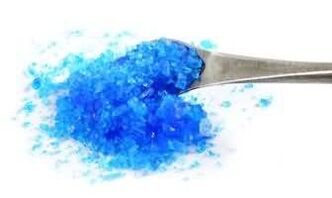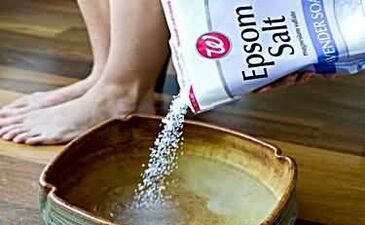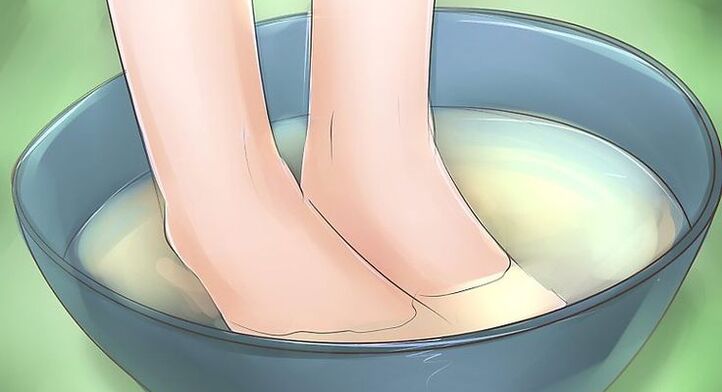Fungal diseases that affect the nails of the feet and legs cause severe discomfort and can significantly worsen a person's quality of life. In addition, nail fungus is characterized by a long and complicated treatment process when it is detected in the later stages.
However, it is easier and relatively easy to deal with it if you start timely treatment when the first symptoms of a fungal infection appear.Traditional medicine suggests the adoption of some recipes that can solve the problem of the development of fungi.
Iodine protects nail health
Having a protein structure, dermatophyte fungi parasitize on the nails, the skin of the feet and between the fingers and feed on the horny scales of the skin and keratin, which is part of the nail plate.
Therefore, it is not surprising that the most popular remedy for onychomycosis at home is an alcoholic solution of iodine. Iodine solution has a detrimental effect on the structure of protein cells, destroying them; in addition, iodine is a fairly strong antiseptic and has pronounced fungicidal properties (resistance to mold formation).
Remember that iodine is a very active substance and, if handled incorrectly, can cause harm, such as chemical burns, etc.
The affordable price of iodine makes this drug attractive to users for the treatment of nail fungus, as well as for preventive purposes. It is worth remembering the rules that must be followed when using iodine solution for medical purposes.
Safety rules when working with iodine
- Treating the skin with an iodine solution can cause irritation and allergic reactions.
reaction. Therefore, before you start using it, check the reaction of the skin by smearing the place of the bend of the elbow with an iodine solution. - Regular use of iodine solution strongly pigments the nail in a yellow color, which can only be removed with the growth of a new nail.
- In case of improper use or exceeding the permissible dose, a chemical burn or inflammatory skin lesion (dermatitis) may occur.
- Only the affected nail and skin areas should be treated and only at the stage of primary symptoms.
Recipes based on iodine solution
- Recipe 1. An alcohol solution of iodine (5%) is applied one drop to each affected nail twice a day, in the morning and before going to bed, using a cotton swab for convenience. To prevent the disease, as well as for additional strengthening, the same solution, but in a smaller dose, can be smeared on healthy nail plates.
- Recipe 2. The six-week course of treatment is divided into three stages of fourteen days. During the course, the infected areas of the skin and nails are treated sequentially: Castellani liquid in the first two weeks, iodine solution in the second stage, vinegar solution (9%) in the last two weeks.
- Recipe 3. First, a solution consisting of the following components is prepared: iodine, chlornitrophenol, acetic essence, garlic juice in equal parts, one teaspoon of each component. This solution should be used to treat the infected nail every day before going to bed. First, the varnish should be evaporated and the softened part should be removed. Before use, the medicinal mixture must be shaken.
When treating the nails with any manicure accessories, you should remember: to avoid infection of healthy nails, the affected areas should be treated with separate tools.
Treatment with copper sulfate

Copper sulfate or copper sulfate among people is most often used to accompany the traditional treatment of fungal infections. It is produced in the form of crystals, easily dissolves in water and is non-toxic. Two forms are applicable for treatment.
- Copper sulfate solution. It can be done at home. One teaspoon of copper sulfate crystals is dissolved in 1 liter of boiled water. The resulting solution is very concentrated, so it should be used in diluted form for treatment: 1 tablespoon. l. solution for 1. 5 liters of water. With this solution, make ten-minute foot baths before treating the affected areas of the skin and nails with medicines recommended by the doctor.
- Ointment with copper sulfate. Copper sulfate crystals are calcined on a hot surface until the color turns gray or white. Then mix it with other ingredients: yellow sulfur, tar or goose fat, one teaspoon each. The resulting ointment is used to treat sore nails daily until complete recovery.
Sea and table salt to treat fungal infections

Sea salt and common salt can be added to therapeutic foot baths. At the same time, the affected areas of the skin of the feet and nails are disinfected. As a rule, such antiseptic procedures are directed against infections living on the skin and are necessary to prepare the nails for the subsequent application of healing ointments on them.
Salt alone is not able to cure the fungus, but it is often used as a component of healing ointments and mixtures prepared according to folk recipes.
For example, garlic water is very suitable against advanced fungal infections, used to treat the feet and affected nails twice a day. This water is easily prepared at home. The minced garlic clove is mixed with the salt to form a paste. The resulting mixture is dissolved in 200 ml of water. After the final cooling, dissolve another 4 tbsp of salt.
Unusual uses of regular soda
- Recipe 1. The daily use of baths with soap and soda will contribute to better penetration of the medicinal components contained in the drugs directly into the lesions. This can often be difficult because the affected nail is quite thick, grows quickly and acts as an anti-intrusion, and soap and soda baths soften the nail plate. Mix 3 cups of baking soda and 3 tablespoons of grated soap, then dissolve the resulting mixture in 7-10 liters of water. Legs are raised for 20 minutes a day for 4-5 days.
- Recipe 2. A certain amount of baking soda is diluted with water to form a paste that covers the infected nail. A few minutes after applying the baking soda paste to the nail, add some lemon juice. Then the mixture is removed, the nail is washed with soap and treated with antifungal agents. This medicine is also only used as adjunctive treatment.
Treatment process using birch tar
Birch tar is a powerful remedy for all skin diseases. That's why you can treat your feet with natural birch tar. However, the legs are pre-prepared. The feet, steamed in hot soapy water, undergo further treatment: the rough and affected skin of the feet is exfoliated and the infected nails are trimmed. After that, the already dry skin of the legs is smeared with birch tar applied to a cotton pad with rubbing movements. For the next hour and a half you should not wear socks and shoes. Allow time for the tar to absorb into the skin.
Tar is no less effective as a treatment in ointments or mixtures. You can prepare a tar ointment yourself with a tar content of 5–10% in the first stages. You will need a rich nourishing cream or some type of fat. Natural tar is added to the cream and everything is thoroughly mixed. The ointment is ready for use.
Another effective option for the treatment of fungus is a sulfur-tar ointment consisting of tar, powdered sulfur, a base in the form of a cream or ointment - respectively in the ratio: 3: 2: 10. Apply a thin layer of ointment to the affected areas, let itdry and stick a patch on it.
The use of tar soap is useful for the prevention of all skin diseases, as it contains up to 12% pure tar and has antiseptic properties. You should choose handmade tar soap, the usefulness of the composition of which will be beyond doubt.
Celandine for clear skin
Purslane is a poisonous plant, the juice of which is successfully used against fungal and other skin diseases.
- Jaundice juice. The juice of celandine is used to treat diseased surfaces of the skin and nails. Freshly squeezed juice is mixed with alcohol (70%) in a ratio of 1: 1 and infused for the next 24 hours. The treatment process takes about a week, the procedures are carried out regularly 3-4 times a day on previously prepared nails and feet.
- Jaundice infusion. 100 g of dry celandine leaves are added to 1 liter of boiling water. After half an hour, the resulting infusion is added to the foot bath and the feet are steamed for 20 minutes every day.
- Ointment. Purity is part of medicinal herbal ointments to combat fungal infections. In cooled boiled water (4 tablespoons), add 5 drops of fresh celandine juice, 2 drops of oregano and 2 drops of previously prepared calendula tincture. Treatment with such an ointment will take about 10 days, but the damaged areas should be treated at least three times a day.
- yarrow oil. You can use calendula oil, which is sold in any pharmacy, or you can make it yourself at home, although this process is quite laborious.

It is still better to use folk remedies for the treatment of nail fungus in combination with traditional medicine - the effect will be stronger and the treatment time until full recovery will be significantly reduced.
















